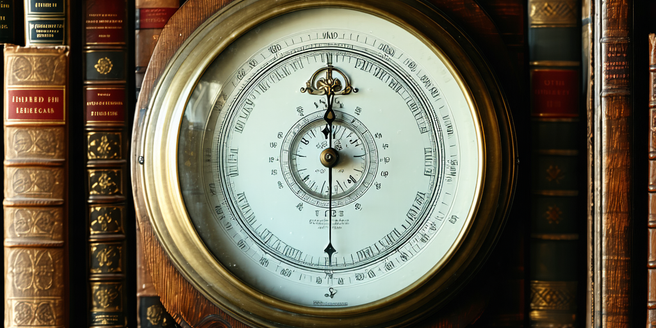
Early Innovations in Meteorological Instruments
The history of meteorological instruments is marked by fascinating early innovations. Instruments like the barometer, hygrometer, and anemometer laid the groundwork for modern meteorology. The barometer, invented in the 17th century, measured atmospheric pressure, crucial for predicting weather. The hygrometer, which measures humidity, and the anemometer, for wind speed, were similarly groundbreaking. These instruments slowly evolved, incorporating new materials and methods to improve accuracy. Their development was instrumental in advancing weather science from reliance on observation and folklore to empirical data collection and analysis. These early innovations not only improved weather predictions but also ignited a curiosity that led to the advancement of more complex and automated weather systems in the centuries to follow. Overall, they set a critical precedent for the technological growth of atmospheric science.
The Rise of Automatic Weather Systems in the 20th Century
The 20th century saw a profound transformation in weather monitoring with the rise of automated systems. Advances in electronics and computing during this period enabled the creation of more efficient and reliable weather stations. Early systems used automation to reduce human error and increase data collection frequency. These stations could operate in remote and harsh environments where human presence was limited, providing previously unavailable data. The development of telecommunications allowed real-time data transmission, leading to quicker and more accurate forecasts. These innovations greatly benefited sectors like agriculture, aviation, and disaster management. By reducing dependency on manual readings, these systems also paved the way for creating large networks of weather stations, resulting in comprehensive weather monitoring on a global scale.
Technological Advances and Their Impact on Accuracy
Technological advances have significantly enhanced the accuracy of automated weather stations. Early systems relied on basic sensors, but modern stations are equipped with sophisticated technology capable of measuring numerous meteorological variables such as temperature, humidity, wind speed, and direction with great precision. Innovations in sensor technology, data processing algorithms, and communication systems have allowed for high-resolution data collection and rapid analysis. This has led to improved weather models and forecasting techniques, making predictions more accurate and reliable. The integration of satellite and radar data provides a three-dimensional view of weather systems, enhancing predictive capabilities. These improvements not only reduce errors but also provide critical insights crucial for combating climate change and managing natural disasters.
Global Adoption of Automated Weather Stations
The global adoption of automated weather stations marks a significant milestone in meteorological science. As developing countries seek to strengthen their national weather services, these systems offer a cost-effective solution with minimal maintenance requirements. Nations worldwide have invested in dense networks of automated stations, increasing the quality and quantity of data available. This comprehensive coverage enables more accurate local, regional, and global weather forecasts. International collaborations and standardization of data sharing protocols have further facilitated the integration of diverse data sources. These developments are crucial for addressing global challenges like climate change, where accurate and timely weather data is essential for mitigating impacts. Thus, automated weather stations are indispensable tools in the quest for enhanced climate resilience.
Challenges Faced by Early Automated Systems
Early automated weather systems faced multiple challenges that required innovative solutions. Limited by the technology of the time, these systems struggled with issues like sensor accuracy and reliability under extreme weather conditions. Power supply was another major obstacle, as many stations were deployed in remote areas without access to the electrical grid. Data transmission posed additional difficulties, with early communications technology often causing delays and data loss. Engineers worked to overcome these challenges by developing more robust systems capable of withstanding environmental stresses. Innovations in solar power and improved battery technology provided more reliable energy solutions. Despite these early hurdles, the perseverance and creativity of scientists and engineers paved the foundation for the sophisticated and reliable weather monitoring systems we have today.
The Future of Weather Monitoring Technology
The future of weather monitoring technology promises exciting developments poised to revolutionize meteorology. Emerging technologies such as the Internet of Things (IoT) and artificial intelligence (AI) are expected to play a major role. IoT-enabled sensors will provide dense and real-time data streams, enhancing situational awareness. AI algorithms will analyze vast amounts of data swiftly, identifying patterns and providing accurate forecasts with unprecedented speed. Additionally, advancements in satellite technology will offer finer resolution imagery, improving the monitoring of atmospheric phenomena. The integration of renewable energy sources ensures that future weather stations will be more sustainable. As climate change presents evolving challenges, these technological advances will be crucial in adapting to changes and ensuring the safety and well-being of communities worldwide.
